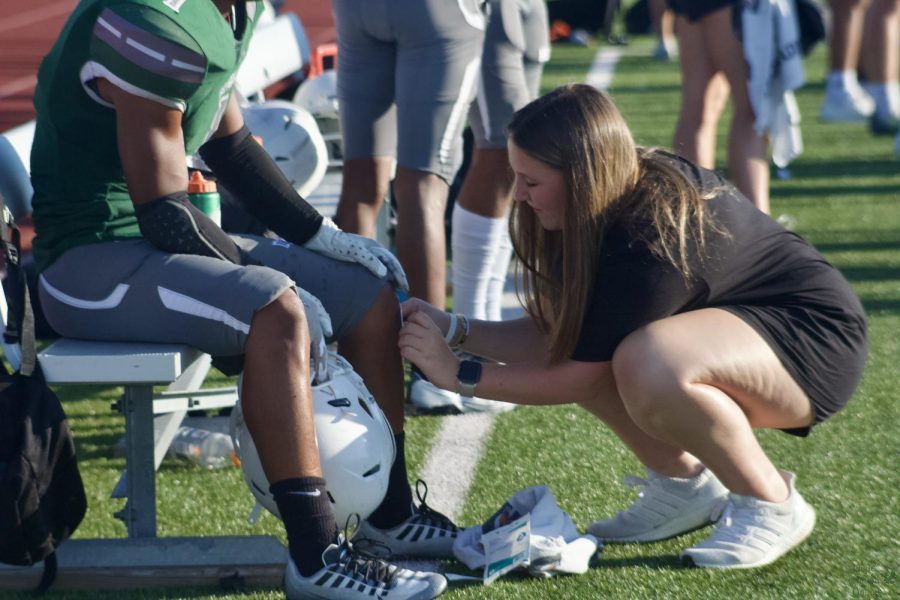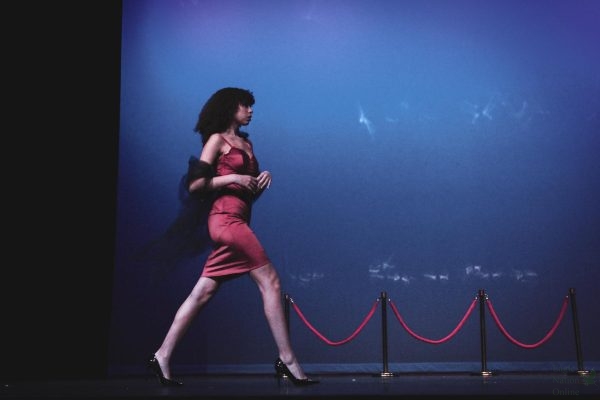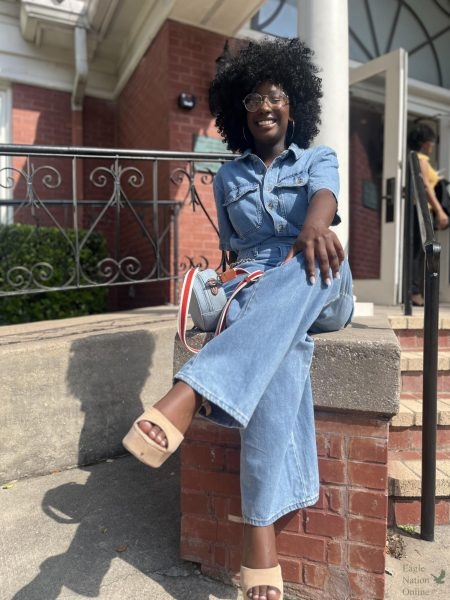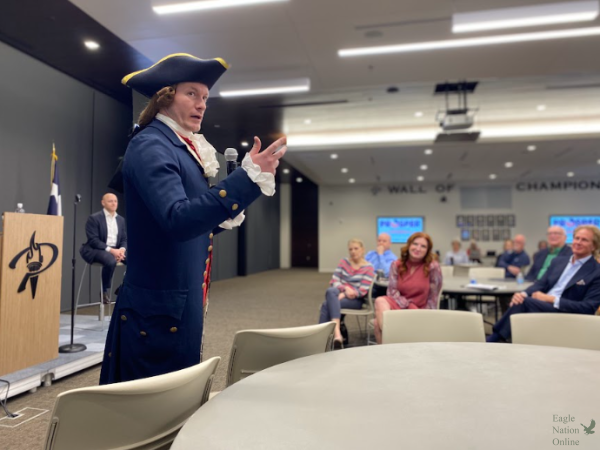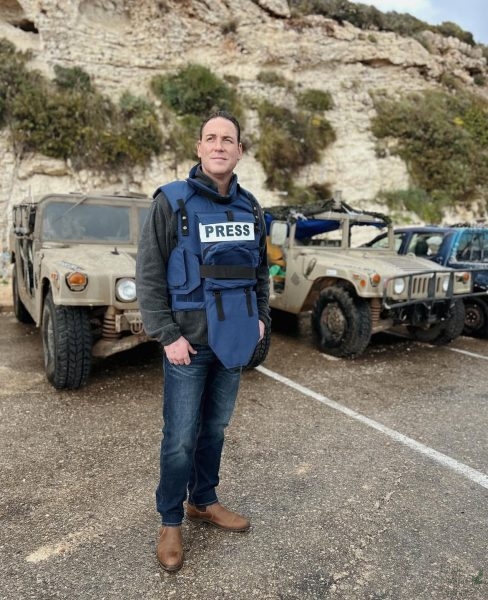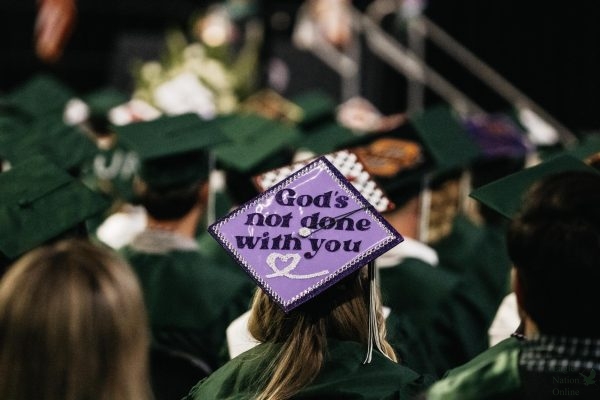Sports medicine students aid athletes
Above, Junior Mckenna Clark assists a junior varsity football player during a game as she assesses his wound. In addition to medical and therapeutic knowledge, students use communication skills to work with the athletes that need them. “I’d say it’s rewarding,” sophomore Nixon Rigoni said, “(When) you know that you’re helping someone be the best them.”
As the whistle blows, a player goes down on the field in pain. In the midst of concern coming from the team, Prosper’s sports medicine students step into action to assess the injury.
High school athletics move at a fast pace. From fall sports, to winter sports, to spring sports, coaches and athletes are busy 24/7. This is where the Prosper High School sports medicine staff steps in.
These students assist student-athletes with injuries and any discomfort they are dealing with, on and off the field.
“(The head trainers) can’t be everywhere at once to help people,” sophomore Nixon Rigoni said. “So, we’re like their second hand when they’re on the field.”
These students also put in hours before and after school to help athletes.
“It has a lot of time commitment, especially because of football,” junior Athena Pinar said. “Not everyone can get the experience that we have.”
They (the head trainers) can’t be everywhere at once to help people. So, we’re like their second hand when they’re on the field.
— Nixon Rigoni, sophomore
In the sports medicine class, students learn the different techniques and procedures that are essential for treating athletes, and then they apply these skills at games.
“Even though the football players may not think that we do anything,” junior Mckenna Clark said. “In case somebody gets hurt, I don’t think they realize how much they depend on us.”
Being in the course and aiding athletes involves more than just filling water bottles and setting up ice baths. Sports med students said they enjoy the entire experience of forming connections with student-athletes, as well as being able to pick up knowledge about other sports.
“Coming from another student-athlete, it’s fun to connect with them on that level,” Rigoni said. “The experience is really nice.”
With their expertise in the field, head trainers and coaches assist the students in the class.
“The best part about teaching our students is that we immerse them into the profession,” head trainer Michael Henry said. “They are right next to us in every aspect.”
Most students enroll in the course with the intent to carry these skills with them into future careers.
“Right now I’m mostly leaning towards (being) an orthopedic physician,” Clark said. “I’ve thought about (being) an NFL trainer. That would be my dream.”
For those interested in sports medicine, Pinar said several types of specialization fields are available. But, the students said the class does have its challenges, including the need for accuracy with each task.
“There’s so many different steps that you have to follow,” Rigoni said. “If one thing messes up, everything goes to pieces.”
“(When wrapping ankles), you don’t want it to have wrinkles in it,” Clark said. “Because, it can hurt when the athletes walk.”
Henry said breaking down the content that students learn also matters when they are learning such a complex subject.
We always debrief after an injury or evaluation with the students, so they understand what they have learned in the past and how it is applied.
— Michael Henry, head trainer
Year-round, the sports medicine students continue to work with players, coaches, and peers to expand their expertise. Throughout the course, the students said they also focus on communication and efficiency skills.
“I’d say it’s rewarding,” Nixon Rigoni said, “(When) you know that you’re helping someone be the best them.”
In addition to medical and therapeutic knowledge, students use communication skills to work with the athletes that need them.
“If you’re debating whether to join or you’re just curious about sports medicine, it’s very interesting,” Pinar said. “And, the pros outweigh the cons (by) a lot.”
Your donation will support the student journalists of Prosper High School. Your contribution will allow us to purchase equipment and cover our annual website hosting costs.
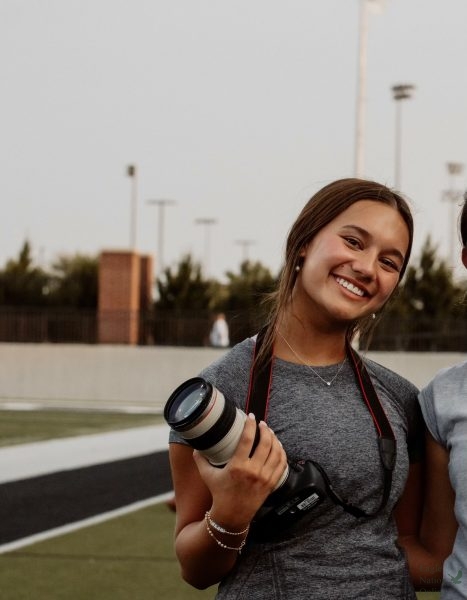
2023 Best in Texas News & Broadcast
Honorable Mention Sports Feature Story
Honorable Mention Sports Column


